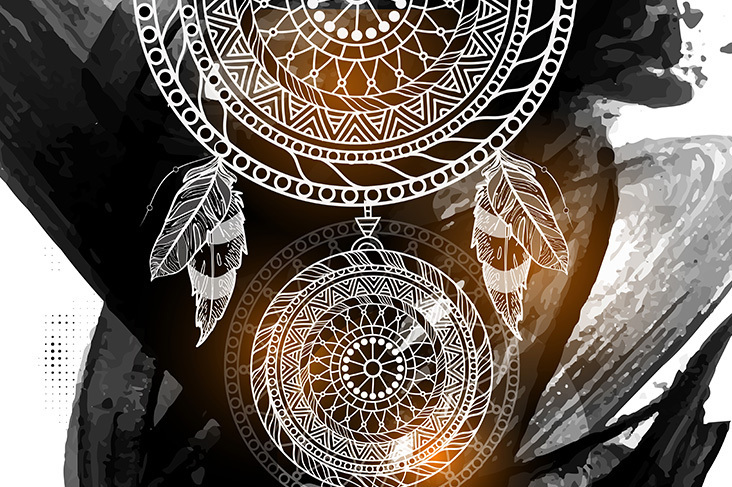You may know dreamcatchers as pretty-looking artifacts hanging on walls, doors, windows, in cars, or attached to wallets or purses.
Yes! It looks beautiful. But do you know what it really means or what it stands for?
If you have always wondered what this intricate piece of artwork signified. This article will help you explore the several different meanings and representations of a dreamcatcher.
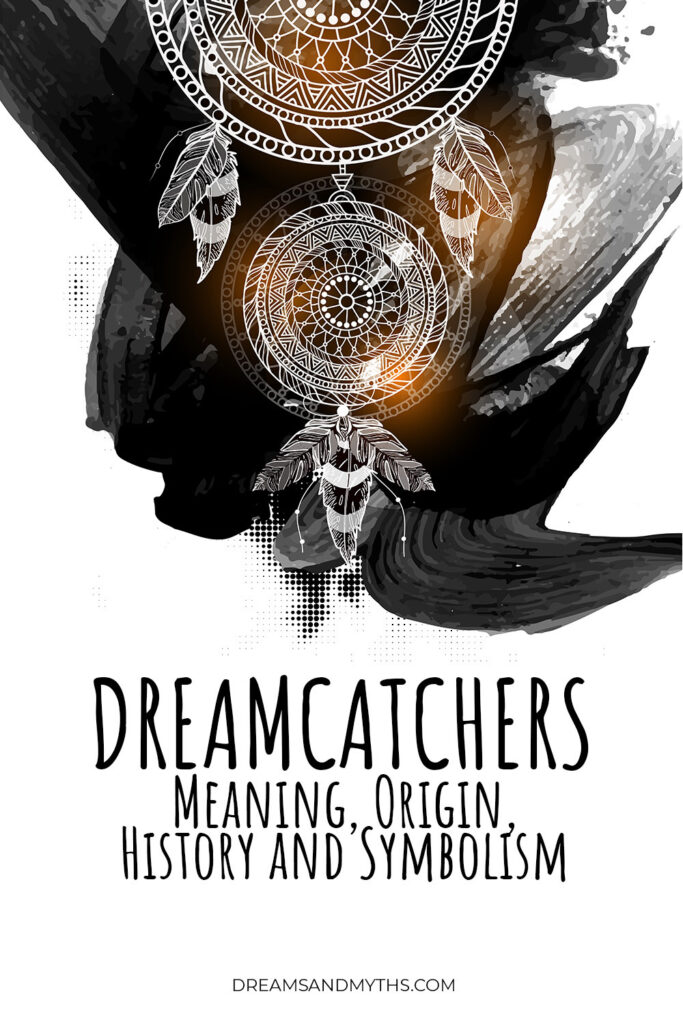
You are about to uncover a lot of trivia about dreamcatchers, including their origin stories, history, their making, and some interesting legends.
Now let’s dive in and start our curiosity voyage to the world of dreamcatchers.
The Origin of a Dreamcatcher
The concept of a dreamcatcher originates from Native American culture. It’s a symbol that holds a deep significance in the daily lives of the indigenous tribes of America even to this day.
The legendary story says that the Ojibwe tribe primarily made dreamcatchers for the protection of their babies while they were sleeping.
The dreamcatcher was hung over their cribs or cradleboards to keep nightmares at bay.
The Spiderwoman and her babies: The famous teachings of the Anishinaabe people about the origin
According to an old, pre-civilization legend and as per teachings of the Anishinaabe people based in present-day Canada, the spider-woman was believed to be a motherly figure, the ultimate protector of all tribes.
But as the Anishinaabe nations spread rapidly, covering vast lands, it became difficult for the spider-woman to reach and protect all her children. So she and her grandmother together weaved spider-like webs for her children made out of willow hoops and many other plants that effectively created a charm to ward off bad spirits.
All hail the spider-woman!!
The First Dreamcatcher
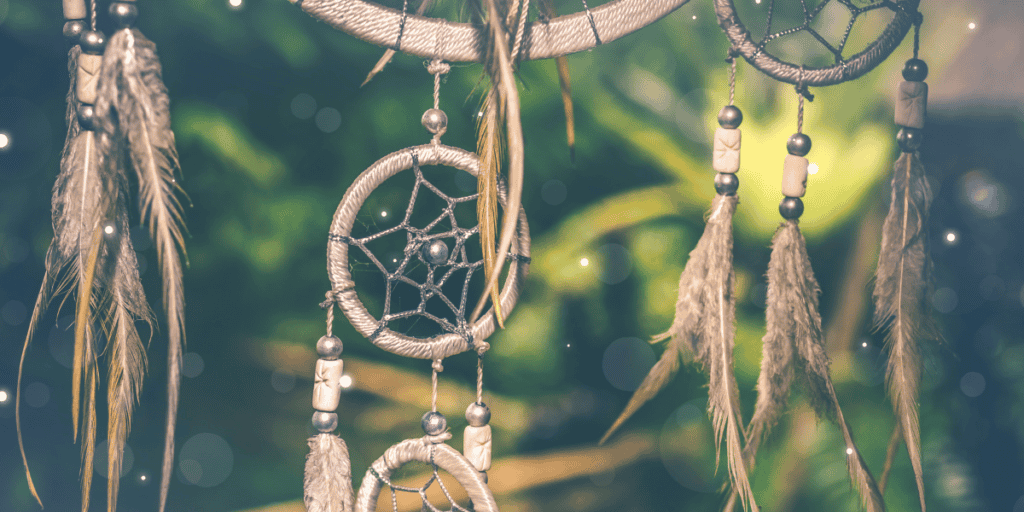
Historically, the Ojibwe tribe, also known as the Chippewa tribe, made the first dreamcatcher ever. But as they intermarried into other tribes such as Lakota and others. The specimens of the ancient dreamcatchers are rarely available. But ethnographer Frances Densmore extensively researched, collected, and documented them starting in the 1920s.
The dreamcatcher spread and passed on the tradition from one tribe to another and from one generation to another.
The oldest forms of dreamcatchers were made of materials available from mother nature. So, traditionally they were produced from natural elements only to get integrated back into the natural environment.
Out of deep respect for mother nature, the Native Americans made it a point to ensure nothing from nature was wasted – be it leftover leather, feathers, or animal hide.
The Lakota or the Teton Sioux tribe has a different legend signifying the origin and the symbolism of dreamcatchers. We’ll learn more about the Iktomi legend later in the article.
The Structure of a Dreamcatcher
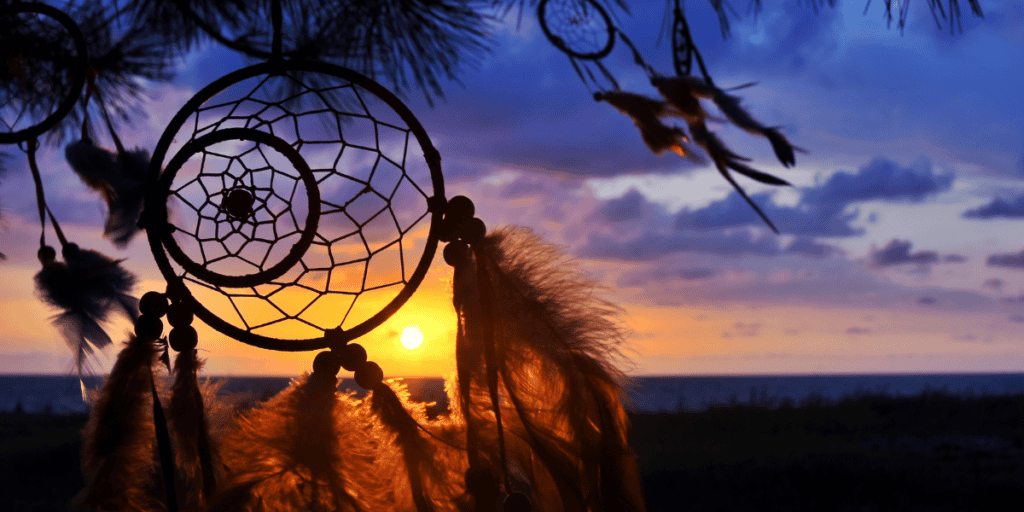
The dreamcatcher has gone through a series of transformations since the beginning of civilization. Several old artifacts couldn’t be found because they were all-natural elements. And most probably perished in nature with time.
However, some of them have been documented, photographed, and preserved in museums.
Let’s look at each of the different pieces that together make a dreamcatcher. And understand what they mean or symbolize.
The Web of a Dreamcatcher
It’s rightly called the web of life!
The earliest dreamcatcher webs were made out of nettle stock twine. They were dyed dark red using the juice of bloodroot and the inner bark of wood plum.
The web symbolizes the spider-woman that represents the Native American version of a Gaia or Mother Earth. She is the epitome of creation. So, she creates, sustains, and protects all her beings.
Most webs have an intricate woven pattern of colorful natural fibers, net, or threads. A dreamcatcher’s web is believed to trap and weed out negativity or bad dreams from coming through and let through only good dreams ensuring you get a sound sleep.
The Hoop of a Dreamcatcher
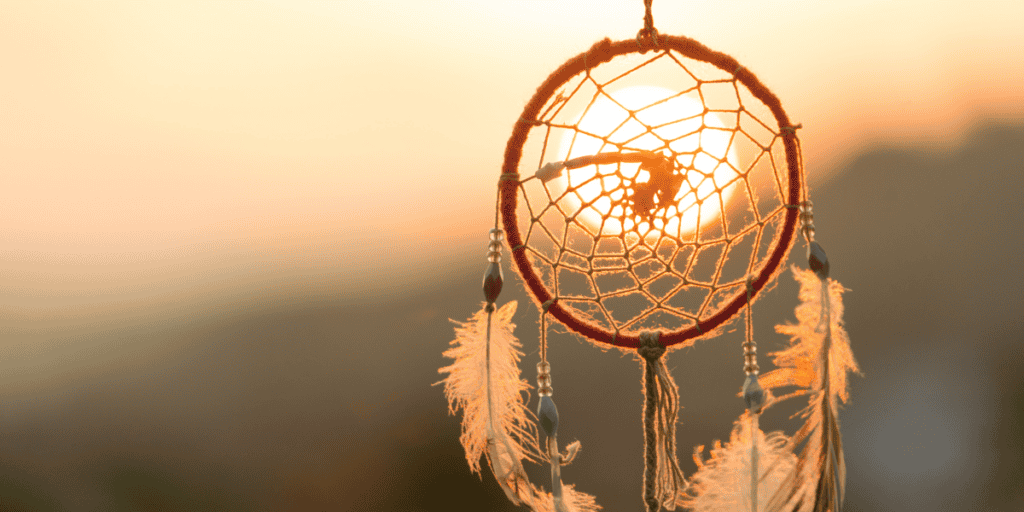
The next obvious identifier is the hoop of a dreamcatcher called the Hoop of Life.
They are round-shaped circular rings made out of wood. But authentic dreamcatcher hoops were produced from Red Willow.
The circle or the hoop represents the circle of life. It symbolizes that life is a never-ending cycle that keeps going around in a circle. Something like what goes around comes around!
The Stones in the central web
A wide variety of stones, beads, or gems fixed within the web represent the spider or the creator of the web. Different people used different beads to serve different purposes based on the teachings in their respective tribes.
But at the end of the day, the basic structure of a dreamcatcher remains the same. With sweeping changes in times, experiments with colors and materials used focused on changing the look and feel of the dreamcatchers for artistic purposes.
In the old times, only a single gemstone or bead was woven into the net as it was believed that there exists only a single creator of life.
The Feathers of a Dreamcatcher
These hang from the bottom of the circle or the hoop of life. It’s said that good dreams find a smooth passageway through the feathers to reach the sleeping baby or person.
As soon as the morning sunlight hits the dreamcatcher, all the nightmares caught in it are destroyed.
You May Also Read: 13 Common Dream Symbols and Their Meanings
Multiple Representations of a Dreamcatcher

According to an old legend in the Lakota tribe, the dreamcatcher is a reflection of the GUFT or the realm of unborn children.
The feathers represent the Thunderbird – the dangerous baby snatcher that gives the child bad bouts of nightmares. And the protectors of the GUFT – the chirping cicadas at night catch resonance in the spider webs like a lullaby. This helps the baby sleep safe.
You May Also Like to Read – The 8 Most Evil Mythological Characters – Dreams and Mythology.
Another legend in the Lakota tribe believes that “Iktomi,” an impostor, deceives the spiritual leader and undertakes the activity of weaving the hoop with a hole in the center.
According to his teachings, life is about striking the golden balance, for which you need to embrace the good and filter the bad. Iktomi said that you need to make the right life choices and move in the right direction by defeating or ignoring the bad.
Therefore, the hole in the center of the hoop serves as a passageway for the bad to escape or filter. And all the good get caught or stuck in the net woven into the hoop for you to embrace it and get headed in the right direction.
The Lumbee tribe in North Carolina also hang dreamcatchers above their babies’ cribs to ensure the child sleeps well.
If you observe the early forms of dreamcatchers, different things were hung from the wooden hoops for the well-being of the babies. For example, the umbilical cord! It was believed that the early separation or detachment of the umbilical cord from the babies led to the loss of complete wisdom in life. So, hanging them from the hoops made sure the wisdom of the baby was protected.
Cones filled with maple sugar with birch bark were also attached to the hoops so babies could chew on them while they were teething – kind of like playtime or entertainment for them.
Later the dreamcatchers were made into colorful art pieces that Native American warriors pinned on their heads to protect their scalp locks. These warriors traditionally preserved their hair as they believed it had immense spiritual powers.
The hoops for warriors were specifically made out of wood and had a shape of a snake. It goes without saying, that a dreamcatcher not only protected babies but the great Native American warriors as well.
The Cree Tribe created a peculiar kind of dreamcatcher with a unique design. It also had a more advanced woven pattern into the hoop.
How did Dreamcatchers Become Popular?
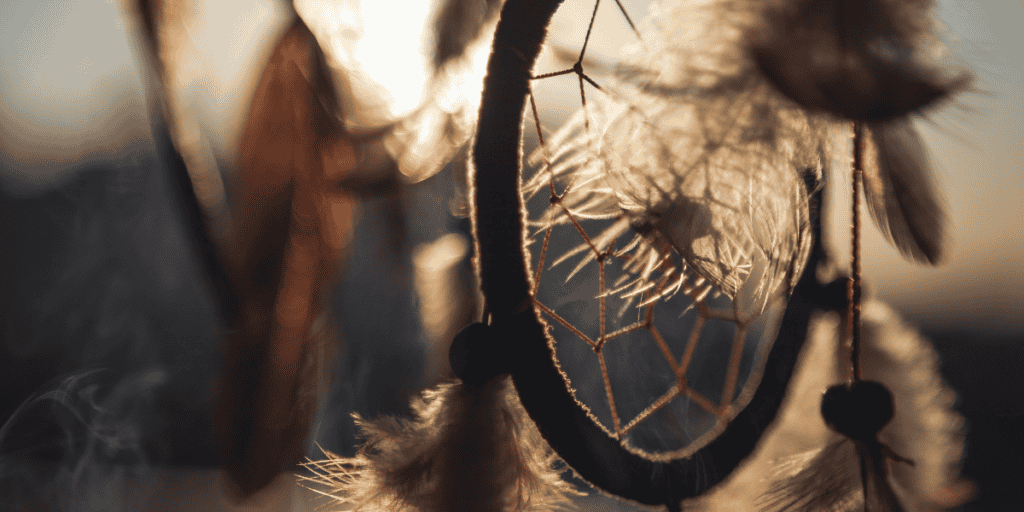
Let’s talk about the contemporary relevance of dreamcatchers and how they got introduced into mainstream life.
We’ll have to go all the way back to the 1960s era when the pan-Indian movement happened. The Native Americans who were a part of the movement used the dreamcatcher as a symbol of unity to bring together all their different tribes and cultures. And express their unique identity in the media and in the rest of the world.
By the 1980s, dreamcatchers became a popular, marketable artifact sold almost everywhere. It became a THING! With this, the process of producing dreamcatchers also underwent transitions to match the diverse tastes and artistic preferences of the people.
However, some Native Americans don’t appreciate the overcommercialization of dreamcatchers because that defeats the original purpose of why they were made in the first place. Also, traditional dreamcatchers were relatively smaller in size and were made out of real natural elements such as real feathers, animal hide/skin, etc.
In the present times, you should be mindful of what you should use to make dreamcatchers due to the increasing environmental awareness and regulations. So the use of feathers of endangered species such as owls, eagles, and more to create dreamcatchers is illegal and must be avoided at all costs.
When it comes to the use of dreamcatchers in different religions, there are no restrictions at all. Dreamcatchers have become both popular as well as neutral to any specific religion or culture.
Some Christians might be against having dreamcatchers in their houses as it’s the primary element used in Pagan worship. However, there is no solid evidence that universalizes or postulates that dreamcatchers are bad or sinful.
The Contemporary Relevance of Dreamcatchers
In modern times, dreamcatchers are widely used by the Native American people as native gifts in the form of jewelry like earrings and accessories. They are even gifted to people to adore their homes and channelize positive energies. It’s kind of like a good luck charm that is given to newly married couples or first-time parents.
The beauty of dreamcatchers has increased their popularity even among non-natives. They are used in occupational therapy. So, many people engage themselves in creating attractive dreamcatchers because the entire process of making them is quite meditative or therapeutic.
Since dreamcatchers are extensively used beyond indigenous tribes, their look and feel have been altered to a great extent without considering their symbolic, cultural and historical importance. Many dreamcatchers are made differently with different materials; they appear different as compared to the original ones and are made only for the purpose of style or modern fashion.
Every piece and the kind of material used for individual components of a dreamcatcher has a symbolic meaning. It’s a deeply rooted concept as it reflects the strong, vibrant culture and the beliefs of the Native American tribes. So, some of the indigenous communities may feel that modern-day dreamcatchers breach the rich, meaningful pre-civilization symbolism.
Bonus read – Check out the American Mythology 101: Your Guide To American Myths and Legends – Dreams and Mythology to learn some really interesting American myths and legends.
Verdict
Wow! Never thought a dreamcatcher could be so deep and mesmerizing a thing?
But now you know that it’s more than just a beautiful piece of craftwork!
This talisman of protection not just secures you from bad dreams but also from evil spirits, energies, and thoughts. It’s very much like your vision board in the modern context.
So, you can very well see it as a visual reminder of your hopes, dreams, and aspirations you envisioned for yourself for a better future.
